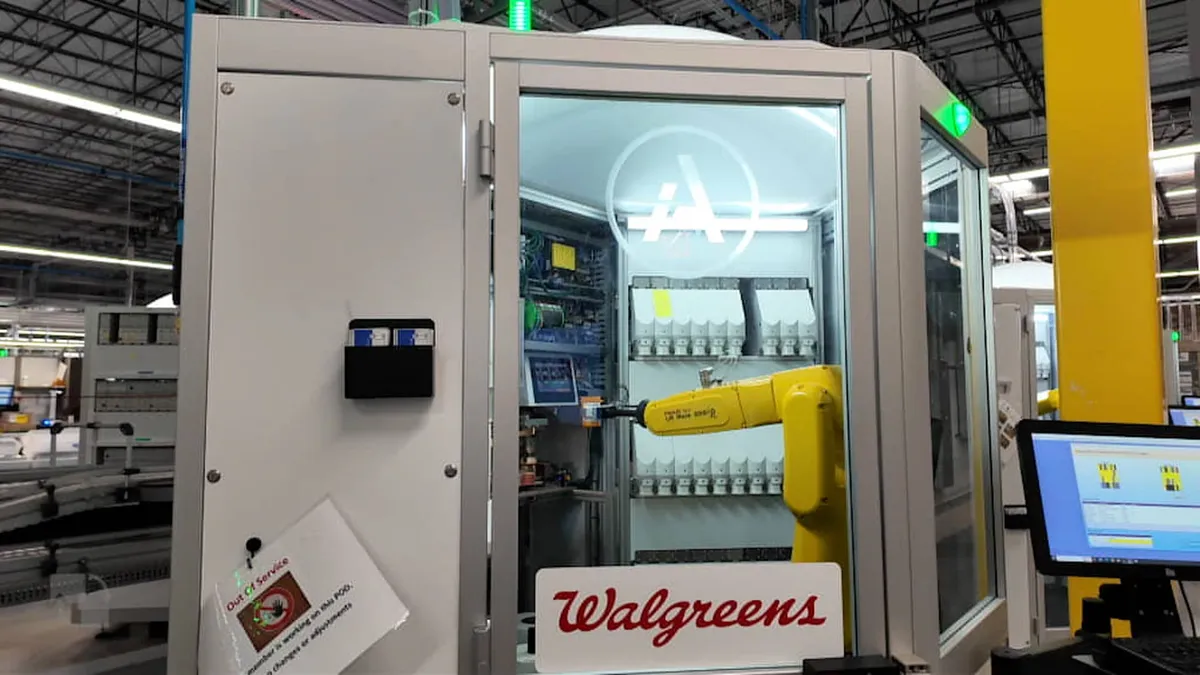
As struggling drugstore chains seek to recover from recent challenges, Walgreens is making significant strides by doubling down on automation. The company is increasing the number of retail stores benefiting from its innovative micro-fulfillment centers, which utilize robotic technology to efficiently fill thousands of prescriptions. This initiative primarily targets patients managing chronic conditions such as diabetes and high blood pressure, allowing pharmacy staff to redirect their focus towards patient care.
The primary goal of Walgreens' automation strategy is to free up valuable time for pharmacy staff. By reducing routine tasks and eliminating inventory waste, Walgreens is setting the stage for employees to engage more directly with patients. This shift not only enhances the customer experience but also allows pharmacy professionals to provide more clinical services, such as vaccinations and health testing.
Walgreens first introduced its robot-powered micro-fulfillment centers in 2021 but temporarily paused their expansion in 2023 to concentrate on gathering user feedback and enhancing performance. After over a year of careful upgrades, including the development of new internal tools, the company is now poised to broaden the reach of this technology. As of now, Walgreens aims to have its 11 micro-fulfillment centers servicing over 5,000 stores by the end of the year, a significant increase from 4,800 locations in February 2023 and 4,300 in October 2023.
According to Walgreens, the automated centers currently handle an average of 40% of the prescription volume at participating pharmacies, translating to approximately 16 million prescriptions filled monthly. This renewed push for automation coincides with Walgreens' plans to transition to a private company through a $10 billion deal with Sycamore Partners, expected to finalize by year’s end. This move marks a significant turning point for Walgreens, which has faced numerous challenges as a public entity, including declining pharmacy reimbursement rates, decreased consumer spending, and intense competition from industry giants like CVS Health and Amazon.
Similar to CVS, Walgreens has shifted its strategy from launching new stores to closing hundreds of underperforming locations to stabilize profits. The company is under pressure to remain competitive as online retailers attract more customers and patients increasingly prefer fast home delivery over traditional pharmacy visits.
In light of growing discontent among pharmacy staff, Walgreens is keenly aware of the need for operational improvements. In 2023, nationwide walkouts highlighted issues of burnout and chronic understaffing, prompting the chains to reevaluate their business models. Walgreens reports that investments in robotic pharmacy fills have yielded significant financial benefits, with micro-fulfillment centers generating approximately $500 million in savings by reducing excess inventory and enhancing efficiency.
Kayla Heffington, Walgreens' Vice President of Pharmacy Operating Model, highlighted that stores utilizing micro-fulfillment centers are administering 40% more vaccines than those that do not. Rick Gates, Walgreens' Chief Pharmacy Officer, emphasized that these centers are vital to alleviating workload pressures on pharmacy staff, allowing them more time to interact with patients and provide essential services. The flexibility gained from automation not only lowers costs but also improves patient care and speeds up therapy.
The micro-fulfillment centers provide Walgreens with a competitive edge, especially as independent pharmacies and some rivals lack centralized support systems. However, competitors like Walmart, Albertsons, and Kroger are also exploring their own micro-fulfillment solutions to streamline prescription dispensing.
While these centers present opportunities for cost savings and operational efficiency, they also come with risks, such as dependency on advanced robotics that may lead to disruptions if errors occur. Nevertheless, the trend towards micro-fulfillment centers is likely to become a staple in the retail pharmacy landscape due to their ability to enhance workflows and expedite service delivery to customers.
Heffington noted that Walgreens has successfully reduced overall prescription fulfillment costs by nearly 13% over the past year, alongside a remarkable 126% increase in prescription volume year-over-year, totaling over 170 million prescriptions annually. The company aims to further elevate this number to 180 million or more. To enhance operational transparency, Walgreens has introduced internal tools that allow staff to track prescriptions in real-time, improving customer communication regarding prescription status.
Despite these advancements, Gates acknowledged that there is still work to be done with micro-fulfillment centers. Future enhancements may include direct shipping of prescriptions to patients' homes, thereby alleviating some burdens from retail locations. Reports indicate that some customers have experienced issues, such as incomplete prescription fills and delays, highlighting the need for ongoing improvements in service delivery.
Brian Gange, a pharmacy manager in Arizona, shared his positive experiences with the micro-fulfillment system. He noted a significant reduction in the daily workload, enabling him and his team to engage more with customers. This interaction can lead to critical health assessments, such as blood pressure checks, which can significantly impact patient outcomes. Gange concluded that the integration of micro-fulfillment and centralized services is essential for providing better care to patients.